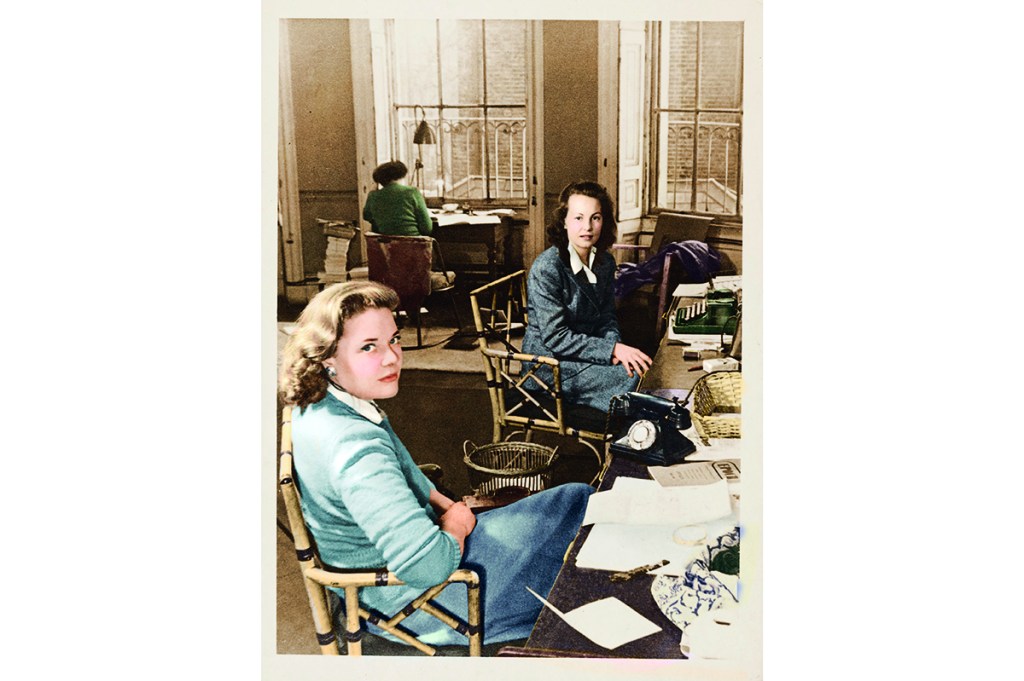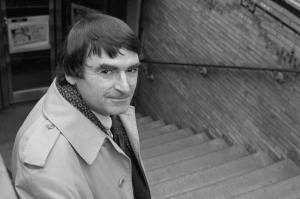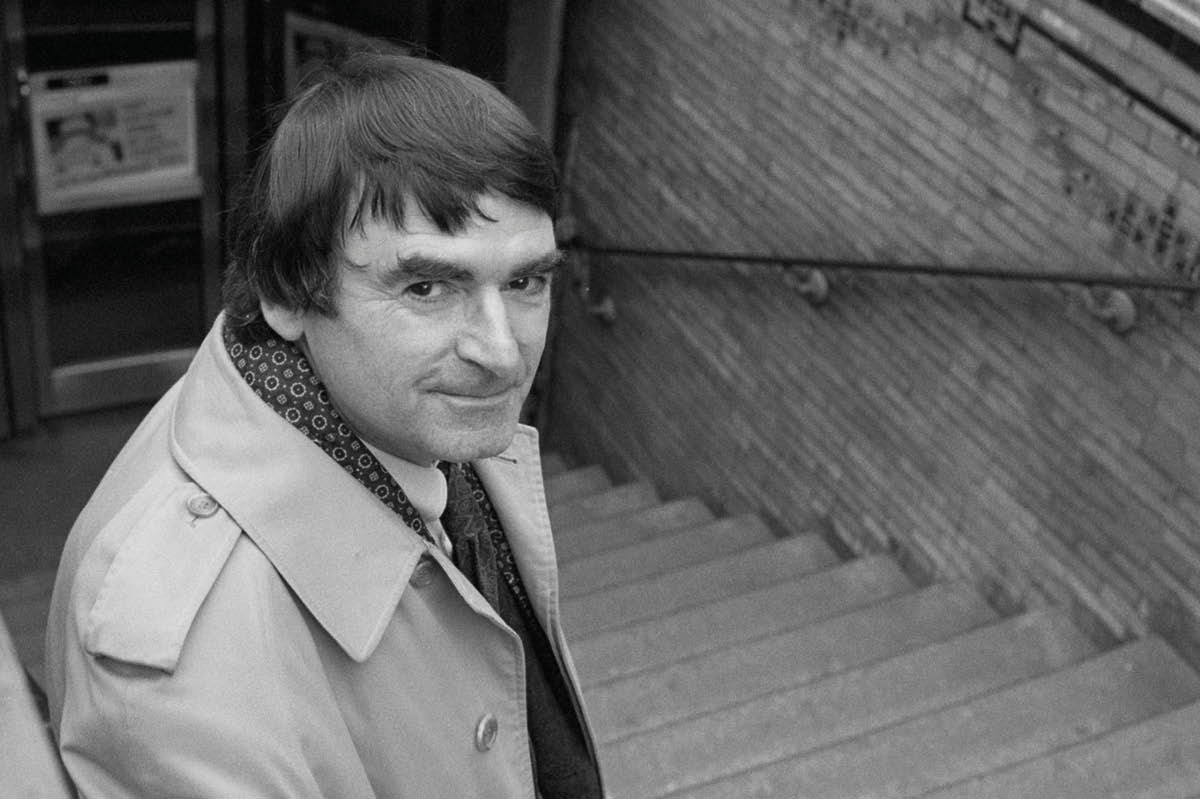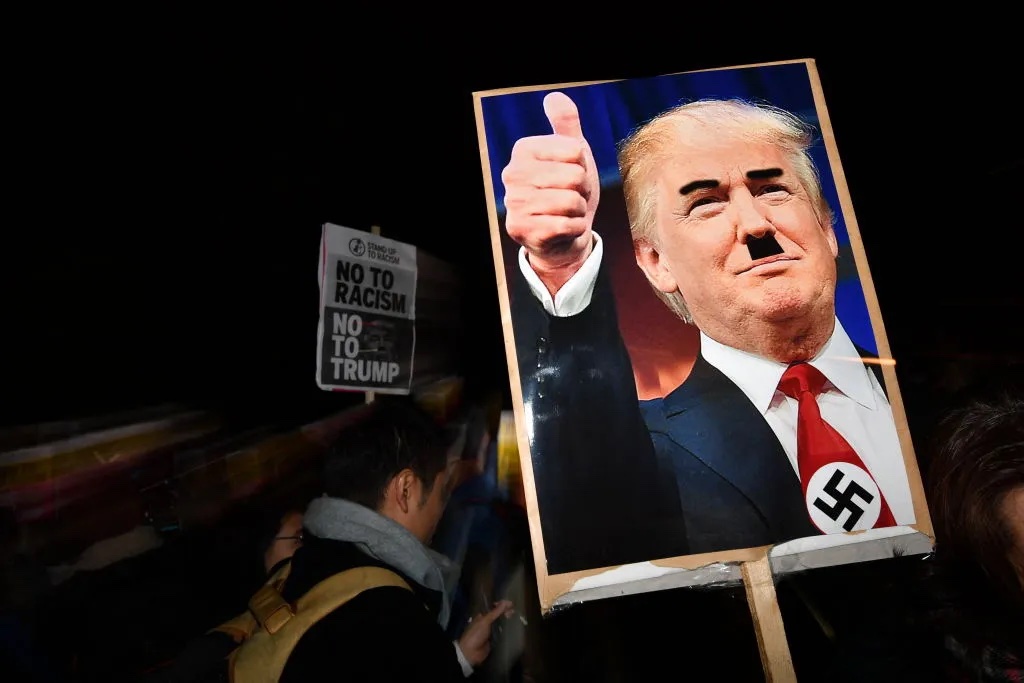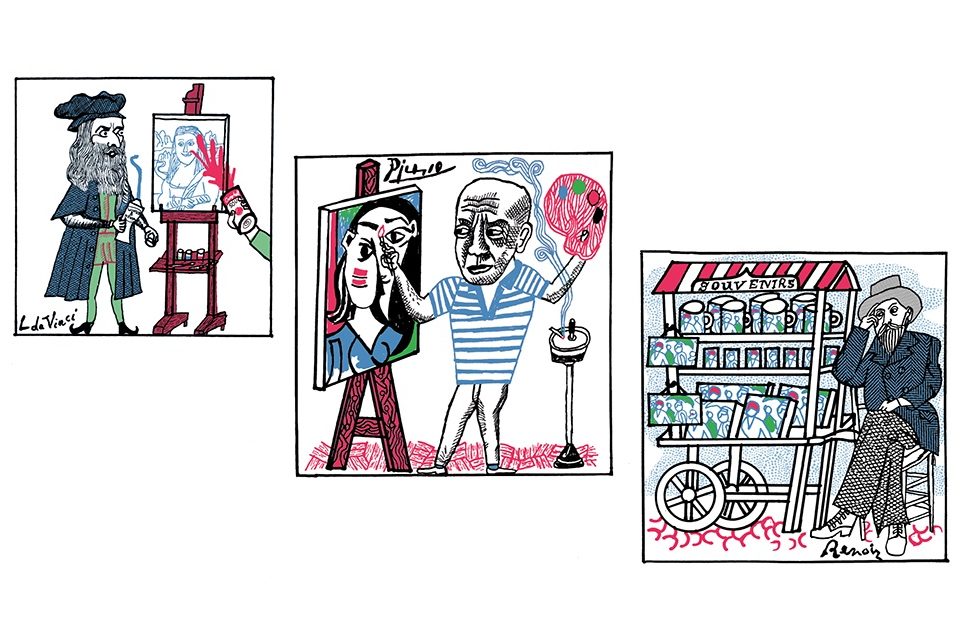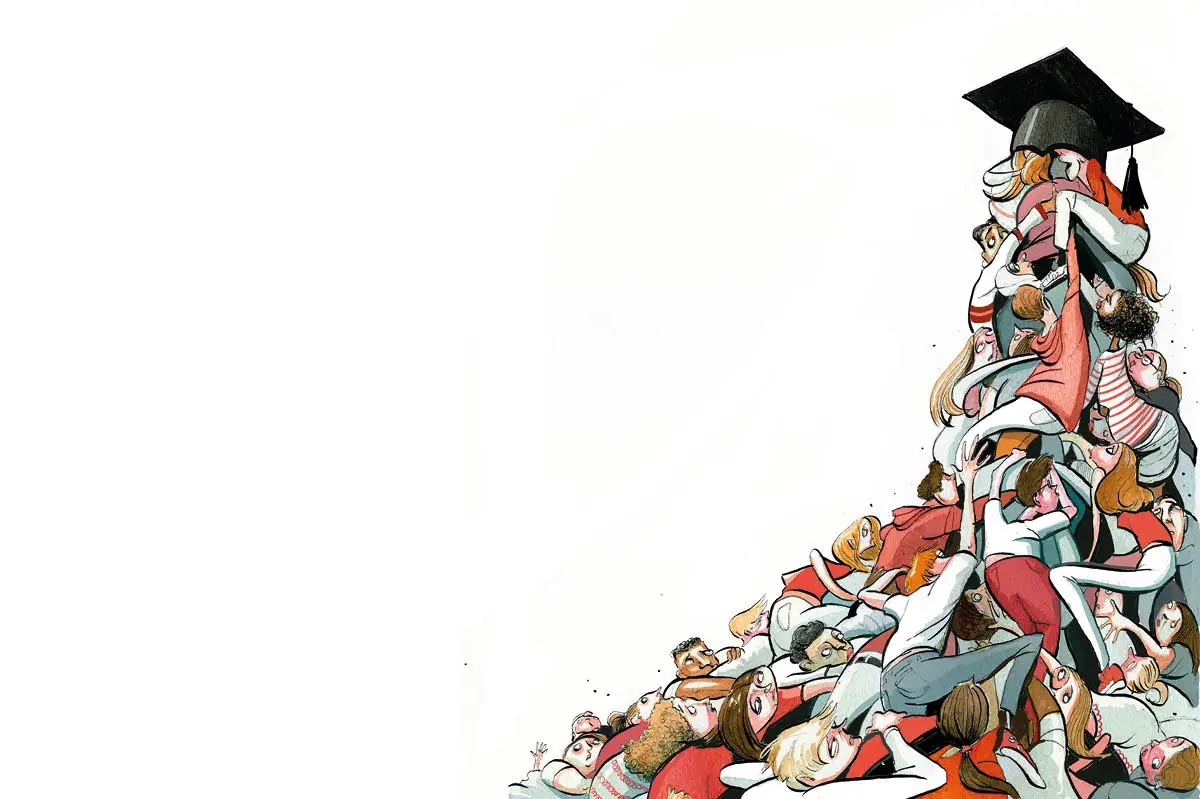This article is in The Spectator’s February 2020 US edition. Subscribe here.
Encapsulations of a particular art-world demographic nearly always fall wide of the mark. Just as there were plenty of people on hand in the 1950s to protest that the Angry Young Men were neither especially angry nor exclusively male, so countless chroniclers of interwar social life complained that the Bright Young People were neither bright nor young. But the critic Peter Quennell’s phrase ‘Lost Girls’ to describe the gang of female twenty-somethings who worked on the magazines and populated the parties of Blitz-era literary London carries an unmistakable tang of conviction.
Quennell (1905–93) had been married to one Lost Girl and conducted a long, unhappy relationship with another. It is impossible to read his descriptions of the ‘adventurous young women who flitted around London, alighting briefly here and there and making the best of any random perch on which they happened to descend’ without suspecting that they are based on bitter personal experience. A short list of Lost Girls would include the man-eating Barbara Skelton (1916–96), whose file of celebrity boyfriends extended to King Farouk of Egypt; Sonia Brownell (1918–80), who married George Orwell more or less on his deathbed; the one-time fashion model Lys Lubbock (1917–89); and the mercurial Janetta Woolley (1921–2018), described by the publisher Lord Weidenfeld as ‘a wayward beauty who had been the Egeria to many remarkable men, some of whom she wed’. This quartet rampaged through the letters and diaries of Forties London and eventually came to rest in the fiction written to celebrate it.
What brought the Lost Girls together, apart from their presence in London in the Blitz, where they often undertook war work or labored in government offices?
They were young and well-nigh fabulously good-looking: the normally dispassionate Bloomsbury diarist Frances Partridge thought Janetta had ‘the most beautiful female body I had ever seen’. They were detached from conventional mid-century family life. Lys was an orphan. Barbara had been dispatched to a youth hostel by the long-suffering Skeltons at 15. Janetta had been left to her own devices by the bohemian Mrs Woolley in her mid-teens. And they all displayed hard-won independence and extreme vulnerability.
These were early days for independent-minded young women trying to fashion lives in a man-dominated world. Freed from parental supervision at an age when most of their male contemporaries were still at school or university, most Lost Girls grew up fast. Barbara became a millionaire’s mistress at the age of 17. The first of Janetta’s three marriages took place before her 20th birthday. By her early twenties, Sonia was conducting an affair with the much older artist William Coldstream, a married man and father of two. All this made them worldly and resourceful, but there were limits to maturity. ‘Nothing seems to toughen me,’ Lys once wrote in a letter. ‘People will always fall in love with me because I am sweet and unselfish, only to use me for their own ends and trample upon me.’
There were always plenty of male celebrities ready to fall in love with the Lost Girls. All four of them are reckoned to have had affairs with the young Lucian Freud. Arthur Koestler, upon emerging from a torrid interlude in Janetta’s company, remarked that it had been a month of ‘hell and heaven’. Hanging over all their doings in the 1940s was Cyril Connolly, around whom all the Lost Girls may be said to have oscillated — the one person capable of uniting their disparate personalities.

Connolly, socialite Angela Culme-Seymour and her half-sister Janetta Woolley, late 1930s
Connolly was at various times married to Barbara and engaged in a nine-year but far from exclusive relationship with Lys. He regarded Janetta as his ‘muse’ and was thought to have matrimonial designs on Sonia. ‘G. Orwell is dead and Mrs Orwell presumably a rich widow. Will Cyril marry her?’ runs an entry in Evelyn Waugh’s diary from January 1950. Forty-six years after his death, it is hard to convey the sheer fascination Connolly (1903– 74) engendered in those who knew him. Part of it was down to his outstanding intellectual gifts. He was one of the most forceful literary critics of the mid-20th century and a decisive influence on the writers who followed him: Orwell called him ‘almost the only novel-reviewer in England who does not make me sick’. Many more took in the paralyzing mystique he created for himself — a mystique that the people closest to him were expected enthusiastically to propagandize.
Much of it was on display in Horizon, the literary magazine that Connolly edited throughout the 1940s and in whose Bloomsbury offices Lys, Sonia and to a lesser extent Janetta all worked. The faint air of being part of a public spectacle rubbed off on Connolly’s assistants, and what began as a routine could transform itself into a self-conscious ritual. Lys remembered Dylan Thomas coming in to borrow money; a violently hungover Waugh; and Orwell complaining about Connolly’s relish of the beau monde: ‘He thought Cyril shouldn’t go to fancy dinner parties at the Dorchester when there was a war on.’
A key element of the Connolly mystique was his ability almost systematically to warp the emotional lives of the women with whom he was involved, keeping two or even three affairs going simultaneously, playing one girl off against another and stimulating feelings of remorse and guilt in those left behind. One of the Lost Girls’ saddest legacies is the pile of letters in which they gently reproach Connolly for his betrayals while blaming themselves for his neglect of them. ‘It is unlikely that I shall ever love anybody ever as much,’ Lys wrote at the end of their time together, ‘but I am no good to you… and this makes me nervous and gauche. You should have a self-confident companion.’
Horizon closed at the end of 1949. Lys was already pursuing a new career in publishing. Connolly married Barbara, who, to judge from her scarifying memoir Tears Before Bedtime (1987), was capable of giving as good as she got. The world of the Lost Girls was beginning to enter legend. Many people attached to Connolly’s circle in the 1940s were writers. It was inevitable that as they moved into middle age their Horizon experiences should feature in the half-dozen novels that touch on literary life in wartime London, and that Barbara, Sonia, Lys and Janetta should take on a variety of incidental roles.
As early as The Blessing (1951), Nancy Mitford burlesqued Connolly into the theatrical impresario Ed Spain, whose keen blue eyes are punningly said to look ‘as if they had been concentrated for many years on a vanishing horizon’, and who lives with a band of female acolytes with names like Ulra, Fiona and Phaedra. Evelyn Waugh picked up the baton in Unconditional Surrender (1961), in which the Connolly character, Everard Spruce, edits a magazine named Survival and is waited on by a coterie of secretaries, sometimes spoken of as ‘Spruce’s veiled ladies’, who type his fan letters and selflessly hand over their wartime rations.
If this is only Waugh and Mitford — long-term mockers of the Connolly lifestyle — having a little fun, then there were others eager to put the Lost Girls to more substantial creative use. In his great 12- volume novel sequence A Dance to the Music of Time (1951-75) Anthony Powell projects Sonia Brownell into Ada Leintwardine, found working with maximal efficiency for a postwar publishing firm. Barbara Skelton, meanwhile, is re-imagined as Pamela Flitton, a modern version of one of the Furies, keen on male company but determined to cause as much pain as possible. ‘Giving men hell is what Miss Flitton likes,’ someone shrewdly diagnoses early on in her career.
And then there is Nineteen Eighty-Four (1949), whose female lead — Julia, the ‘girl from the fiction department’ — is, according to Sonia’s biographer Hilary Spurling, the result of Orwell’s decision to ‘take her as his model’. Certainly, Julia has something of Sonia’s forceful demeanor, not to mention a briskly assertive vocal style that stops just short of bossiness.
What remains, three-quarters of a century after the Lost Girls’ wartime heyday? There were never enough of them to become a youth movement, and their influence on the cultural life of their time is largely retrospective. But at the very least they constitute a link between the newly emancipated young women of the 1920s and the much more self-conscious Dionysiac hordes of the Summer of Love. And every so often, in one of the great English novels of wartime life, in a Bloomsbury diary, in one of the endlessly conspiratorial letters exchanged between Waugh and Mitford, there comes a moment when the smoke clears for an instant and we are confronted with the altogether terrific spectacle of a Lost Girl making her presence felt.
This is an edited extract from Lost Girls: Love & Literature in Wartime London, published by Pegasus. This article is in The Spectator’s February 2020 US edition. Subscribe here.



